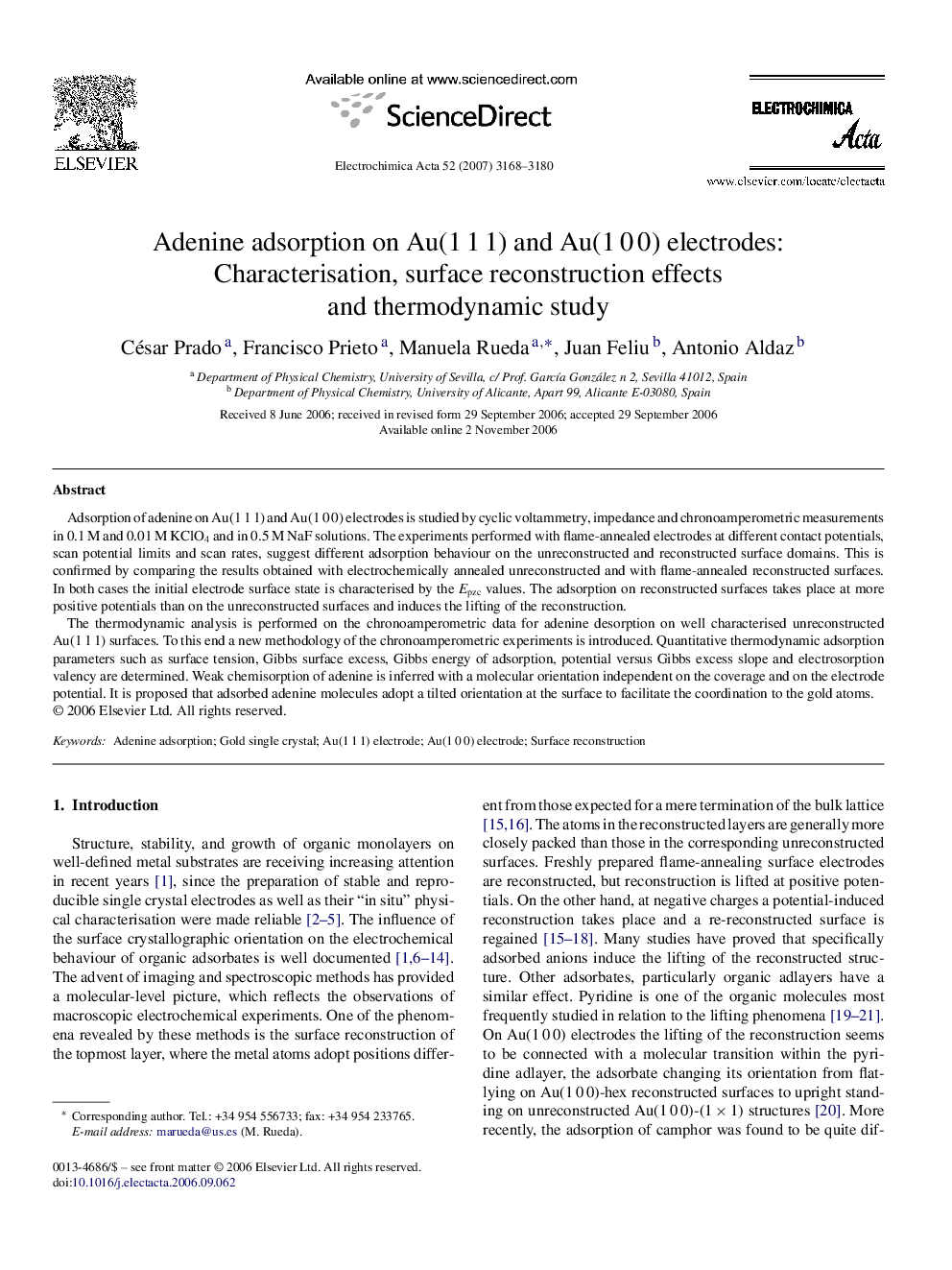| کد مقاله | کد نشریه | سال انتشار | مقاله انگلیسی | نسخه تمام متن |
|---|---|---|---|---|
| 194091 | 459784 | 2007 | 13 صفحه PDF | دانلود رایگان |

Adsorption of adenine on Au(1 1 1) and Au(1 0 0) electrodes is studied by cyclic voltammetry, impedance and chronoamperometric measurements in 0.1 M and 0.01 M KClO4 and in 0.5 M NaF solutions. The experiments performed with flame-annealed electrodes at different contact potentials, scan potential limits and scan rates, suggest different adsorption behaviour on the unreconstructed and reconstructed surface domains. This is confirmed by comparing the results obtained with electrochemically annealed unreconstructed and with flame-annealed reconstructed surfaces. In both cases the initial electrode surface state is characterised by the Epzc values. The adsorption on reconstructed surfaces takes place at more positive potentials than on the unreconstructed surfaces and induces the lifting of the reconstruction.The thermodynamic analysis is performed on the chronoamperometric data for adenine desorption on well characterised unreconstructed Au(1 1 1) surfaces. To this end a new methodology of the chronoamperometric experiments is introduced. Quantitative thermodynamic adsorption parameters such as surface tension, Gibbs surface excess, Gibbs energy of adsorption, potential versus Gibbs excess slope and electrosorption valency are determined. Weak chemisorption of adenine is inferred with a molecular orientation independent on the coverage and on the electrode potential. It is proposed that adsorbed adenine molecules adopt a tilted orientation at the surface to facilitate the coordination to the gold atoms.
Journal: Electrochimica Acta - Volume 52, Issue 9, 15 February 2007, Pages 3168–3180